#snake neck turtle
Text
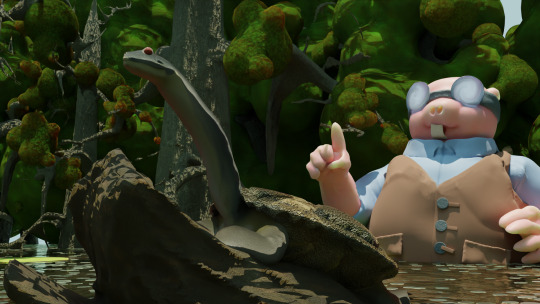

New video! I found the worst animal.
#herp corner#artists on tumblr#video#alter art#system art#reptiblr#herpetology#snake neck turtle#long neck turtle#turtleblr#turtle#turtles#oblong
18 notes
·
View notes
Text

South-Western Snake-necked Turtle (Chelodina colliei), family Chelydae, Western Australia
Some herpetologists use the scientific name, C. oblonga.
photograph by Lewis Burnett
425 notes
·
View notes
Text
instagram
0 notes
Text
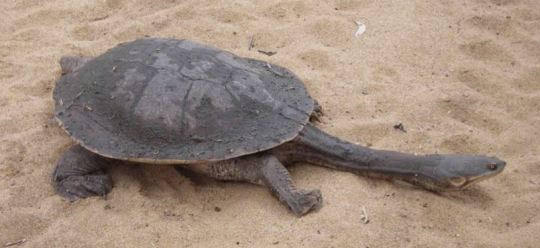
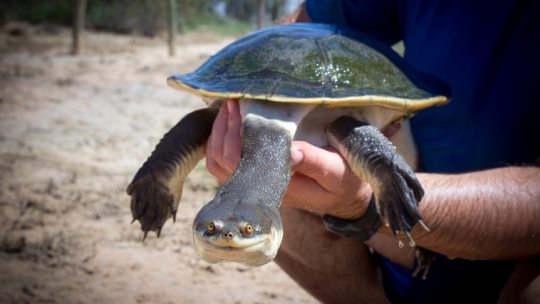

Abroad with the Broad Shelled Turtle
Chelodina expansa, more commonly known as the broad shelled turtle, is one of the largest freshwater turtles in Australia. The length of their shells can reach up to 50 cm (19.6 in), and their neck accounts for an additional 60-80% of their total length. Because of this length, C. expansa tucks its head in sideways as opposed to pulling it directly into its shell. At maximum, females reach a mass of 6 kg (13.2 lbs), while males only typically weigh about 4 kg (8.8 lbs). The top of the shell, or carapace, is dark brown or green, while the underside is a light cream; the same is true for the broad shelled turtle's head, neck, and legs. The feet are webbed, and have large claws which help adults to dig or fend off predators.
While they spend the winter buried in the mud, the broad shelled turtle is most active during the summer months, from November to March. During this time they are almost entirely aquatic, rarely emerging from the water even to bask. This species lives throughout the river basins of eastern Australia, and can be found in rivers, dams, lakes, and wetlands with plenty of vegetation cover. C. expansa is entirely carnivorous, feeding on crustaceans, aquatic insects, fish, and frogs via ambush, and carrion whenever it can find it. To locate prey, they have a keen sense of smell. Adults are not usually predated upon due to their thick shells and sharp claws, but eggs and juveniles are often prey for foxes, dingos, birds, rakalai, and large fish.
C. expansa nests in the winter, beginning in late February or March. Outside the mating season, individuals are generally solitary, but aggressive territoriality has not been observed. When mating time roles around, males seek out females to mate with; following the encounter, the female climbs out onto the bank and digs a nest for a clutch of anywhere from 5 to 28 eggs. To seal the nest, she then slams her body into the re-piled sand and mud, compacting it into a plug that will remain intact until the following year.
Incubation takes about 360 days, though some nests have been recorded as hatching at 500 days; this process is exceptionally slow due to the two periods of diapause, or developmental delays, that embryos pass through in order to survive the winter. Juveniles hatch in the spring, and emerge from the nest at the first heavy rain. It's unknown how long these turtles can live in the wild, but given their slow growth rate and adult invulnerability it's likely that they can live in excess of 20 years.
Conservation status: The IUCN consideres the broad shelled turtle to be Near Threatened, due primarily to habitat loss and high rates of nest predation by introduced foxes.
If you like what I do, consider leaving a tip or buying me a kofi!
Photos
Claire Treilibs
Catherine Heuzenroeder
Shanna Bignell via iNaturalist
#broad shelled turtle#Testudines#Chelidae#snake-necked turtles#Austro-South American side-neck turtles#side-neck turtles#turtles#reptiles#freshwater reptiles#river reptiles#lake reptiles#wetland reptiles#Oceania#Australia#East Australia
252 notes
·
View notes
Text

Grzimek's Animal Life Encyclopedia. Volume 6: Reptiles. Written by Bernard Grzimek. 1984. Illustration by Helmut Diller.
1.) Argentine snake-necked turtle (Hydromedusa tectifera)
2.) Twist-necked turtle (Platemys platycephala)
3.) Red-bellied short-necked turtle (Emydura subglobosa)
4.) Geoffroy's side-necked turtle (Phrynops geoffroanus)
5.) Eastern long-necked turtle (Chelodina longicollis)
6.) Mesoclemmys nasuta
7.) Mata mata (Chelus fimbriata)
#reptiles#turtles#Argentine snake-necked turtle#Twist-necked turtle#Red-bellied short-necked turtle#Geoffroy's side-necked turtle#Eastern long-necked turtle#Mata matas#Helmut Diller
420 notes
·
View notes
Text

Eastern long-necked turtle (Chelodina longicollis)
By: Unknown photographer
From: The Complete Encyclopedia of the Animal World
1980
#eastern long-necked turtle#snake-necked turtle#turtle#reptile#1980#1980s#The Complete Encyclopedia of the Animal World (1980)
52 notes
·
View notes
Text
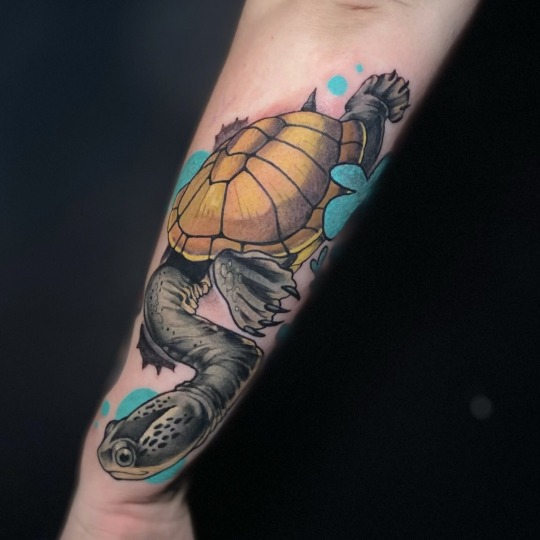
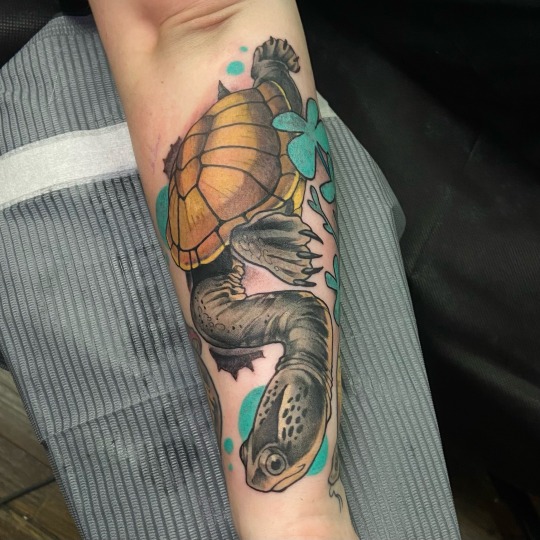

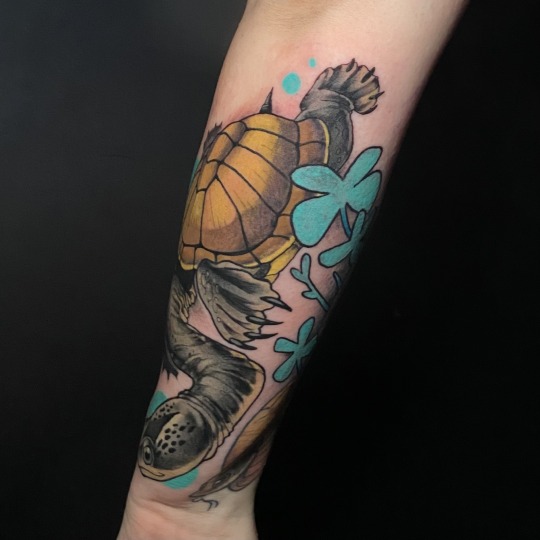

snake necked turtle gap filler
23 notes
·
View notes
Text

“Last October, our Reptile Discovery Center team welcomed four snake-necked turtle hatchlings, the species’ first offspring at the Smithsonian's National Zoo in nine years. When they emerged from their shells between Oct. 13 and 20, they were the size of a quarter and weighed about 3 grams. All four could easily fit in the palm of my hand.”
[ID: A black baby turtle curled up in the palm of a light-skinned hand.] via
103 notes
·
View notes
Text

Omg frida!!! The silly!!!!
#she’s an Australian snake neck turtle in my version :)#she has a very strong aussie accent bc I say so#rottmnt#save rottmnt#rottmnt fanart#rottmnt frida#rise frida#big mamas assistant#pastels art tag
36 notes
·
View notes
Text



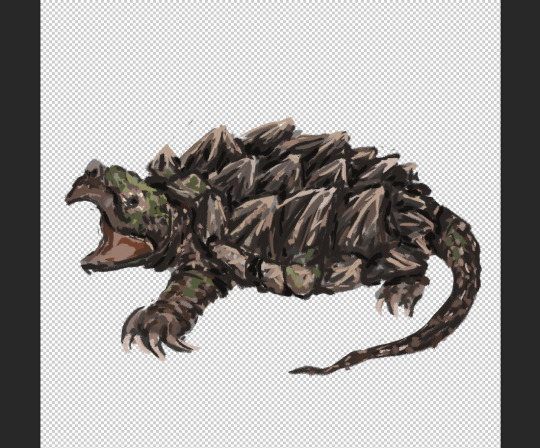

Funny turtle drawings I did at school and a uh realistic Darwin
#If anyone actually sees this send me a turtle to draw#I’m running out of species I know#well I could draw snake neck turtle#those are cool#darwin watterson#darwin#maybe I should draw fish instead#man I would have a blast drawing remora#idk how to spell that fish’s name#how do I tag this#turtles#turtle#art#spotted turtle#Florida soft shell turtle#alligator snapping turtle#red eared slider#gold fish#i drew this in class#I drew this in photoshop too#photoshop#photoshop drawing
56 notes
·
View notes
Text



uhm. okay
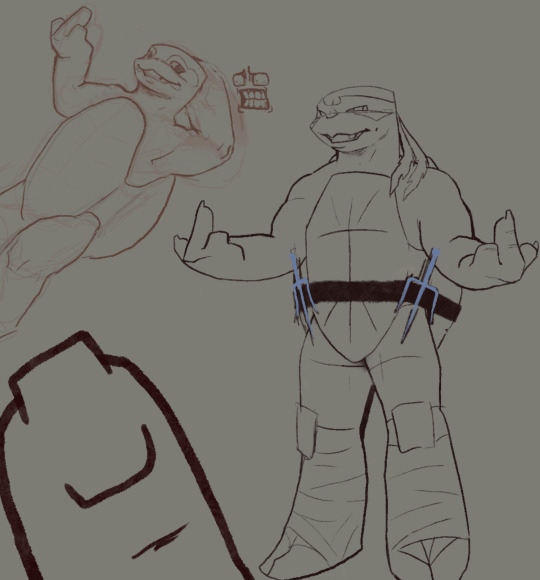
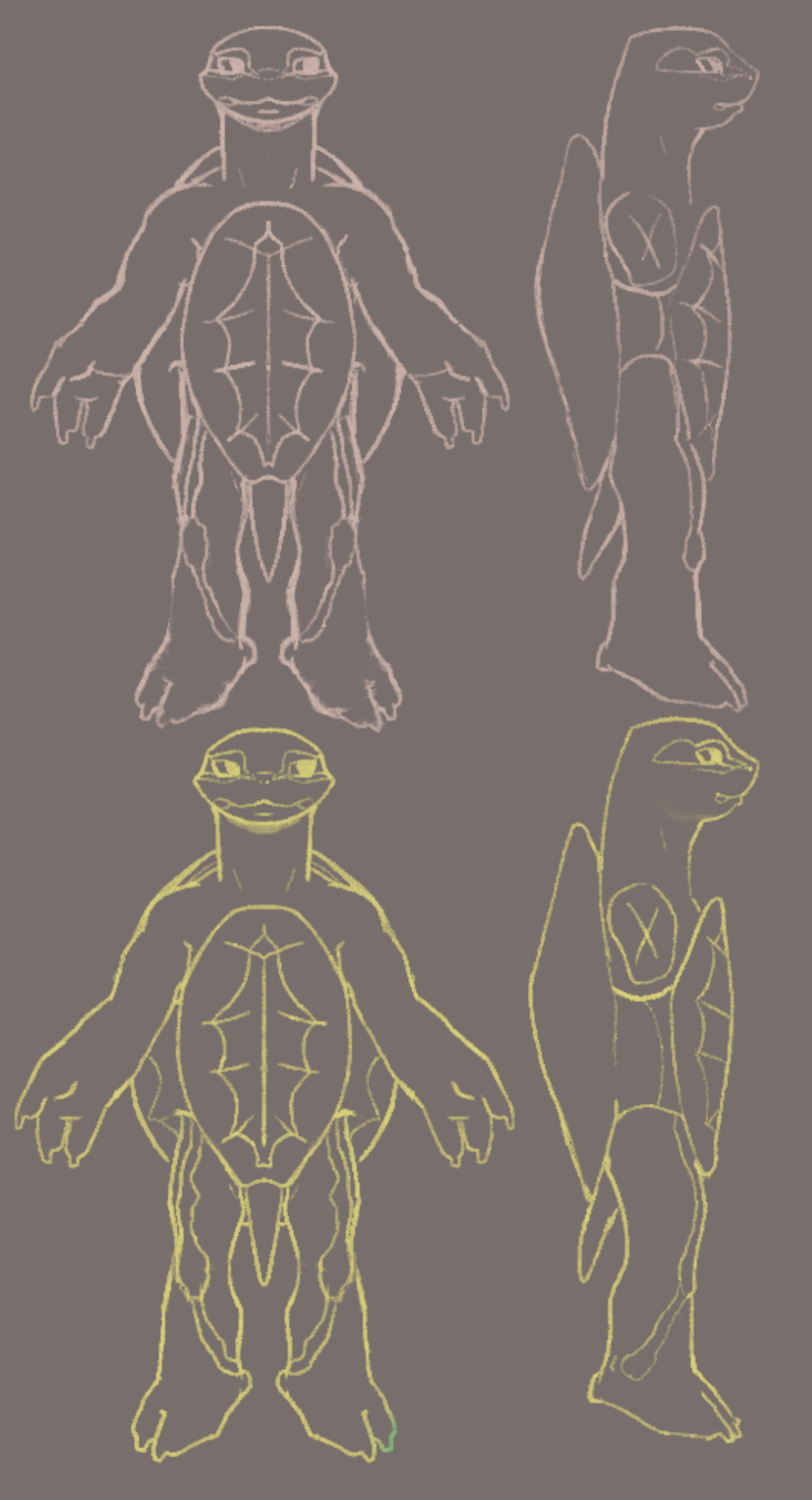
yeah alright. thats cool
#art wip#my art#teenage mutant ninja turtles#my tmnt iteration#character concept#i cant figure out the colors for the life of me somebody HEEELLLP#she/her leonardo#she/he michelangelo#he/him raphael#he/they/it donatello#leo is a japanese pond turtle#mikey is a pink bellied side-necked turtle#raph is a red-cheeked mud turtle#donnie is a snake-necked turtle#not sure on the exact species for donnie yet but whatever#fuck it imma add other tmnt tags#tmnt 2003#tmnt 2012#tmnt au#tmnt mikey#tmnt donatello#tmnt donnie#tmnt raph#tmnt raphael#tmnt leo#tmnt leonardo#transfem leo#genderfluid michelangelo#agender donatello
16 notes
·
View notes
Photo

Australian Snake-necked Turtle. Chris Wellner, Smithsonian's National Zoo.
(via Smithsonian Institution)
6 notes
·
View notes
Text
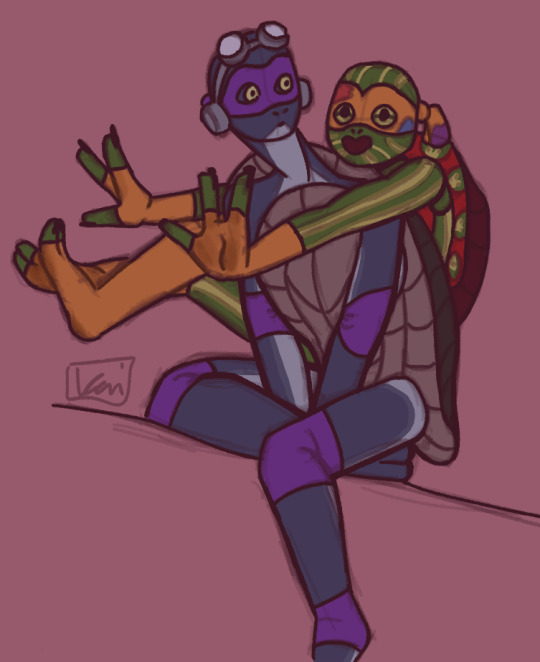
more of the unfinished au thing
#mikeys a western painted turtle and donnies a roti island snake necked turtle#art#au art#mikey tmnt#tmnt mikey#donnie tmnt#tmnt donnie#tmnt fanart#tmnt donatello#tmnt michelangelo
4 notes
·
View notes
Text

Stupid garbage phone probably ruined the quality but I don't care
#hee hee hoo hoo#insert art tag here#enamorus#pokemon#redesign#i kinda like the base Pokemon colors actually. It's the twig of the body and the heart motif that bugged me. So i changed it to a ring moti#and leaned into some more turtle-equse features. And got the snake off her neck too.
2 notes
·
View notes
Photo
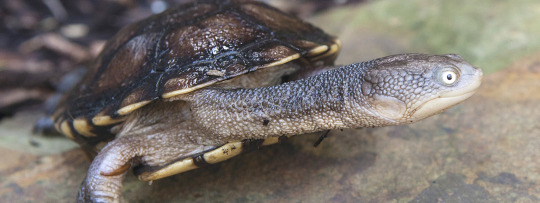
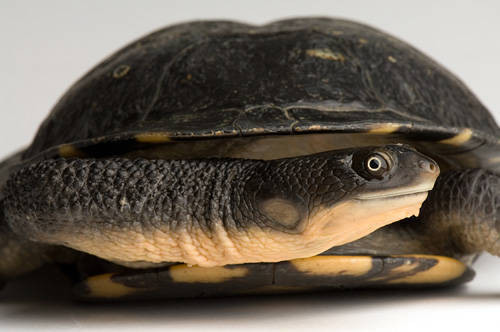
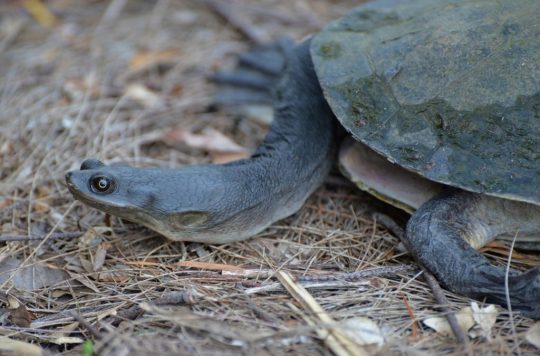

Get Along with the Eastern Long-necked Turtle
For my birthday, I’d like to focus on one of my favorite species: the eastern long-neck turtle (Chelodina longicollis). True to their name, they’re native to eastern Australia where they reside in a variety of habitats, including wetlands, streams, rivers, and dammed waters. In the winter when they become dormant-- a period known as estivation-- they can also be found under logs or leaf litter.
C. longicollis gets its common name from its unusually long neck, which is over half as long as its shell. Because of its length, the eastern long-neck turtle does not pull it directly back when threatened, but rather tucks its neck to the side for protection. The shell reaches about 28 cm (11 in) in length; the top is dark brown, but the underside has a distinctive orange and black pattern which varies from individual to individual. On average these turtles weigh 6 kg (13 lbs), although females are generally slightly larger and have a shorter, fatter tail.
The long neck of this species is useful primarily for finding food. The eastern long-neck turtle is carnivorous, feeding on aquatic invertebrates, fish, crustaceans, tadpoles, and carrion. Occasionally they also feed on terrestrial animals, mainly small amphibians and rodents. C. longicollis is an ambush predator, and its long neck allows it to strike quickly at prey. In turn, they are predated upon by a variety of animals, including larger lizards, snakes, birds of prey, foxes, and dingoes. The turtle’s shell provides an effective defense against these predators; in addition, individuals can emit a foul-smelling fluid from musk glands located near the base of the tail.
The eastern long-neck turtle is solitary. Individuals have large home ranges, and will frequently move when conditions become unsuitable. Territories can overlap, especially during the breeding season, which occurs from September to October. Males travel long distances to find females, and will often mate with more than one. Females lay their eggs from October to December in clutches of 8 to 24, in nests close to the water. The eggs take about 120 days to hatch, after which they are completely independent. Sexual maturity takes longer to reach than for other species; most individuals are only ready to mate at 7 to 12 years old, and can live up to 30 years in the wild. However, many hatchlings die long before then due to predation and high competition with other turtles.
Conservation Status: The IUCN has not evaluated the eastern long-neck turtle, although due to its large population and range it is considered Least Concern. Primary threats include habitat loss and predation by invasive red foxes (Vulpes vulpes)
If you like what I do, consider leaving a tip or buying me a kofi!
Photos
Rosie Nicolai
Joel Poyitt
Peter Storer
Joel Sartore
#eastern long-neck turtle#Testudines#Chelidae#snake-neck turtles#turtles#reptiles#wetlands#wetland reptiles#lakes#lake reptiles#rivers#river reptiles#freshwater fauna#freshwater reptiles#oceania#australia#east australia
348 notes
·
View notes
Text
Reblog and add in the tags your favourite type of design choices/clothing items/accessories you specifically like and notice
#example: i am a HUGE sucker for turtle necks and or with long coats#suit jackets#suits in general#and buttondown shirts#textpost#snake hisses
10 notes
·
View notes